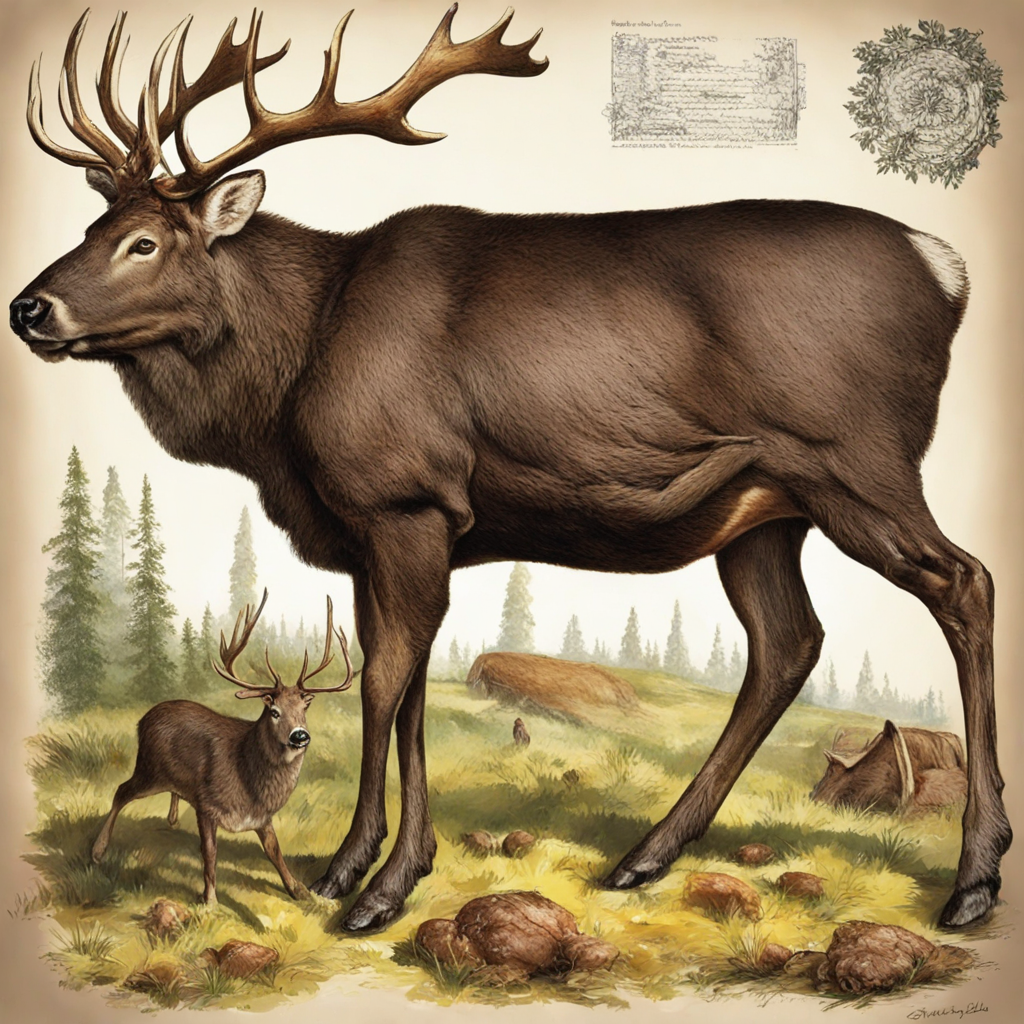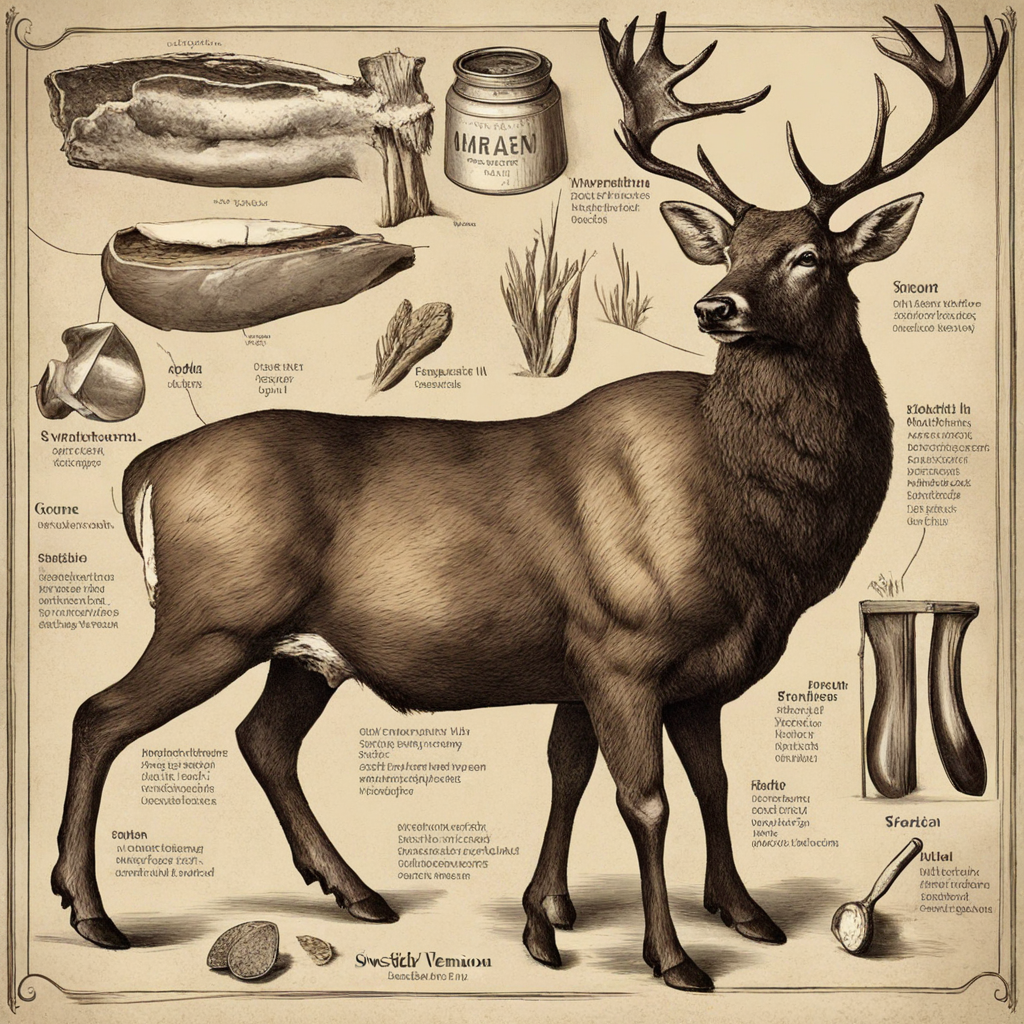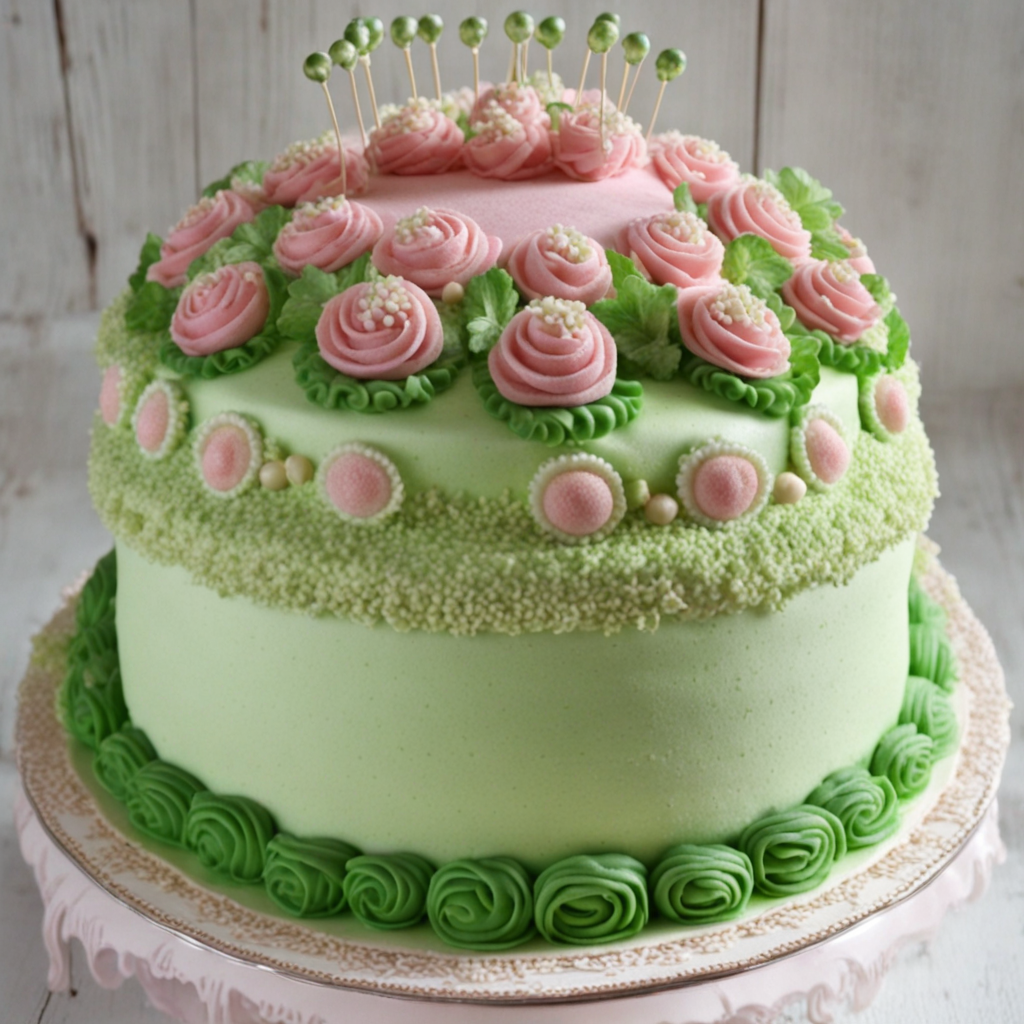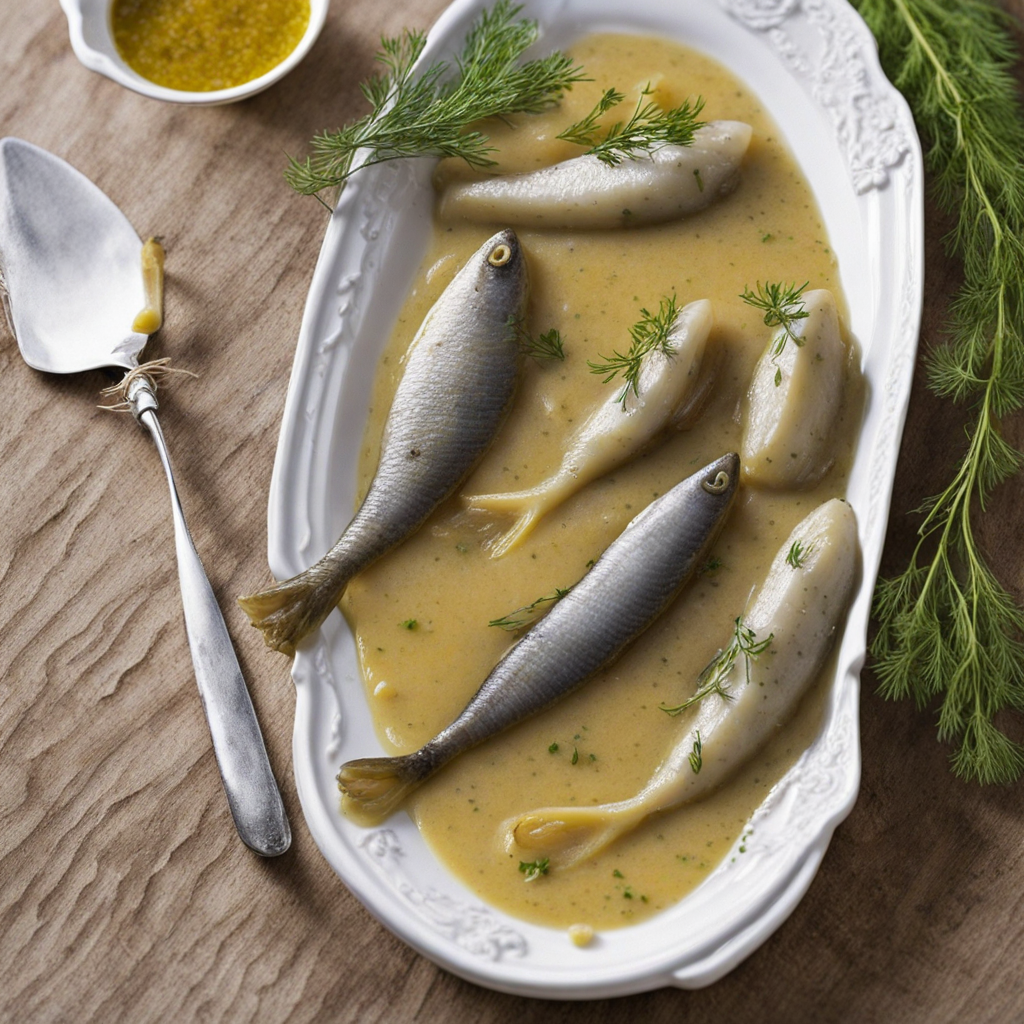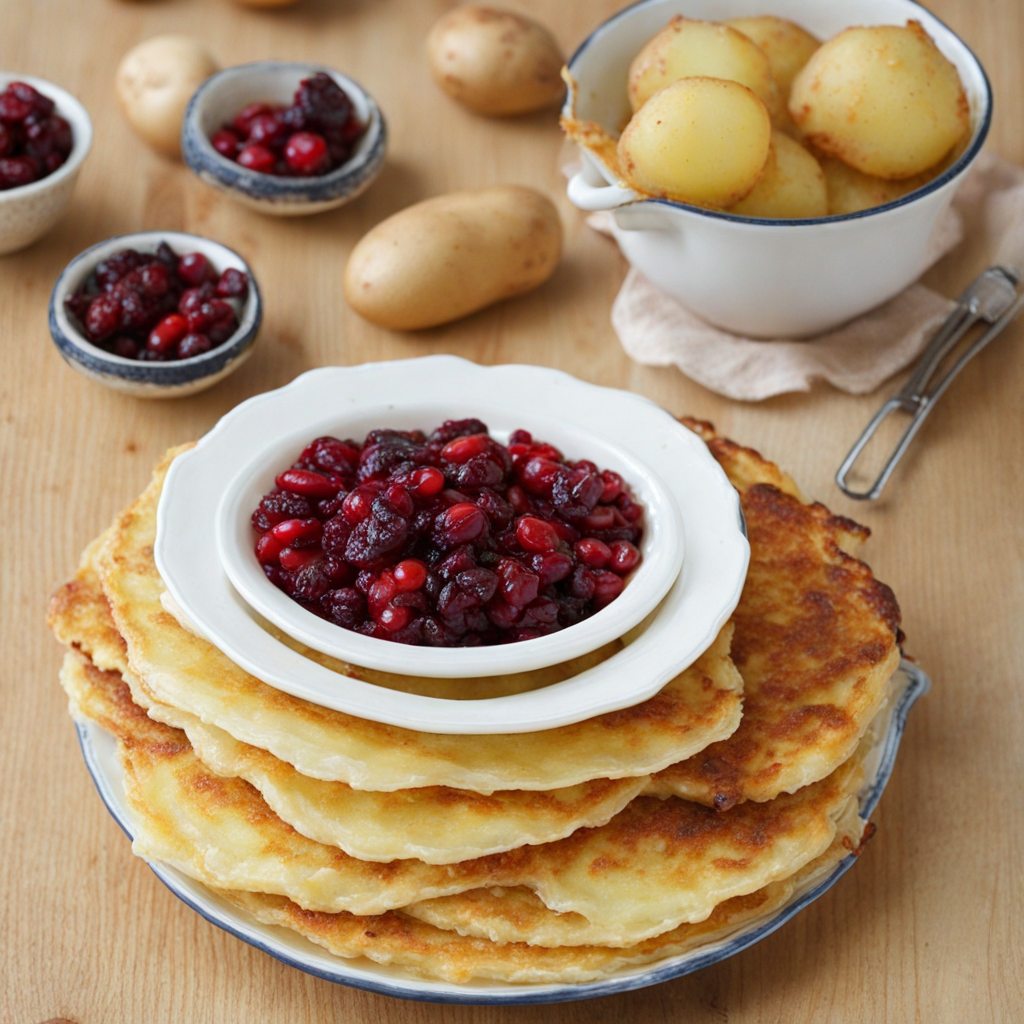Swedish Venison
Swedish Venison, a culinary gem from Sweden, offers a unique and robust flavor profile that captures the essence of the country's pristine forests and rich hunting traditions. This dish typically features game meat from deer, which is known for its lean quality and tender texture. The meat is often prepared with a blend of traditional spices and herbs, such as juniper berries, thyme, and allspice, enhancing its natural flavors and creating a depth that is both earthy and aromatic. The preparation methods can vary, but slow-roasting or braising are common techniques that allow the venison to absorb the flavors of accompanying ingredients, resulting in a dish that is both hearty and satisfying. Pairing is essential when it comes to Swedish Venison, as it is often served with seasonal vegetables and classic sides such as creamy mashed potatoes or lingonberry sauce. The tartness of lingonberries beautifully complements the richness of the venison, adding a bright contrast that elevates the dish. Root vegetables like carrots and parsnips may be roasted alongside the meat, infusing them with savory juices and caramelized notes that enhance the overall dining experience. The combination of flavors creates a symphony on the palate, providing a delightful exploration of Swedish culinary traditions. In addition to its taste, Swedish Venison is often presented with elegance, showcasing the artistry of Nordic cuisine. The plating is typically minimalistic, emphasizing the natural beauty of the ingredients. Whether enjoyed in a cozy cabin after a day of hunting or in a fine dining setting, the dish embodies a sense of warmth and connection to nature. For those seeking a culinary adventure, Swedish Venison promises a memorable journey through Sweden's rich gastronomic heritage, making it an irresistible choice for any food lover.
How It Became This Dish
The History of Rådjur: A Culinary Tradition from Sweden Rådjur, or roe deer, holds a special place in Swedish cuisine, embodying the rich history of hunting, agriculture, and the symbiosis between nature and human sustenance. This small, graceful animal has not only been a source of food but has also shaped cultural practices and societal norms in Sweden over centuries. #### Origins in Nature and Culture The roe deer (Capreolus capreolus) is indigenous to large parts of Europe, including Sweden, where it thrives in the lush forests and rolling fields. Its presence in the Swedish landscape dates back to prehistoric times, where it was a crucial part of the diet of early hunter-gatherers. Archaeological findings reveal that as early as the Stone Age, the roe deer was hunted for its meat, skin, and bones, which were used for tools and clothing. As Sweden transitioned from a nomadic to a more settled agricultural society around 4000 BCE, the relationship between humans and the roe deer evolved. The development of farming meant that deer populations had to adapt to the encroachment of human activities. Farmers often relied on hunting to supplement their diets, and roe deer became an integral part of their sustenance. #### Cultural Significance and Folklore Rådjur is deeply intertwined with Swedish cultural identity. Historically, hunting was not just a means of survival but also a rite of passage and a communal activity. The act of hunting the elusive roe deer became steeped in tradition, with hunters often passing down skills and stories through generations. In Swedish folklore, the roe deer is often imbued with symbolic meaning. It is associated with agility, gentleness, and the natural world's beauty. Many tales depict the roe deer as a creature of the forest, embodying the spirit of nature. Festivals and rituals centered around hunting seasons reflect the respect and reverence that communities had for this animal. Moreover, the roe deer has been an important subject in Swedish art and literature. Artists like Bruno Liljefors captured the grace of these animals in their works, while poets and writers have often drawn on the deer as a symbol of the wild and untamed aspects of the Swedish landscape. #### Development Over Time As Sweden moved through the ages, particularly during the Middle Ages, the role of the roe deer in society began to change. The feudal system established a hierarchy of land ownership, and hunting became a privilege of the nobility. Deer hunting was often reserved for the upper classes, leading to the establishment of hunting lodges and practices that celebrated the sport. The introduction of firearms in the 16th century transformed hunting practices, making it more efficient and accessible. This change not only allowed for greater yields but also led to new culinary techniques as chefs began to explore the rich flavors of game meats. Roe deer, with its tender and flavorful meat, became a favored ingredient in various dishes, often prepared for banquets and feasts. By the 18th and 19th centuries, as urbanization increased and more people moved to cities, the culinary appreciation for rådjurskött (roe deer meat) began to institutionalize. It became a staple in Swedish households, especially during the winter months when fresh produce was scarce. Recipes for preparing the meat, often featuring techniques such as slow roasting or stewing with juniper berries, began to emerge in cookbooks, reflecting regional variations and personal preferences. #### Modern Culinary Practices In the contemporary era, the appreciation for rådjurskött has seen a resurgence in Sweden, driven by a growing interest in sustainable and locally sourced foods. The farm-to-table movement emphasizes the importance of using ingredients that are both ethically sourced and native to the region, and the roe deer fits this ethos perfectly. Today, Swedish chefs take pride in incorporating rådjurskött into their menus. Its lean, rich flavor is celebrated in gourmet restaurants, where it is often paired with seasonal ingredients like root vegetables, mushrooms, and lingonberries. Traditional dishes such as "rödkål" (red cabbage) and creamy sauces enhance the unique taste of the meat, while contemporary recipes might include modern twists, such as roe deer burgers or tacos. Moreover, the hunting season for roe deer, which typically runs from August to January, has become an event for many Swedish families and communities. Harvesting the deer is not only about obtaining food but also about connecting with nature and upholding traditions. Hunting courses and workshops have gained popularity, encouraging younger generations to learn the skills and knowledge necessary for responsible hunting. #### Environmental Considerations The modern approach to hunting roe deer is also informed by environmental considerations. With a growing recognition of the impact of overpopulation on ecosystems, regulated hunting practices play a crucial role in maintaining a balanced environment. Hunting associations work closely with wildlife management organizations to ensure sustainable practices that protect both the deer population and their habitats. The shift towards ethical hunting has given rise to a deeper understanding of the interconnectedness of humans and nature. As Swedish society reflects on its relationship with the land, the roe deer remains a symbol of this bond, representing both a resource and a responsibility. Conclusion Rådjur is more than just a food item in Sweden; it embodies centuries of cultural history, ecological awareness, and culinary innovation. From the days of prehistoric hunters to modern-day chefs, the roe deer has played a significant role in shaping the identity of Swedish cuisine. As the nation continues to navigate the complexities of sustainability and tradition, rådjurskött stands as a delicious testament to Sweden's rich heritage, inviting both locals and visitors alike to savor the flavors of the forest.
You may like
Discover local flavors from Sweden


